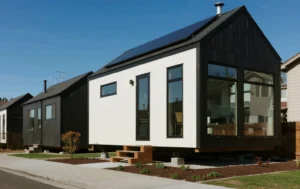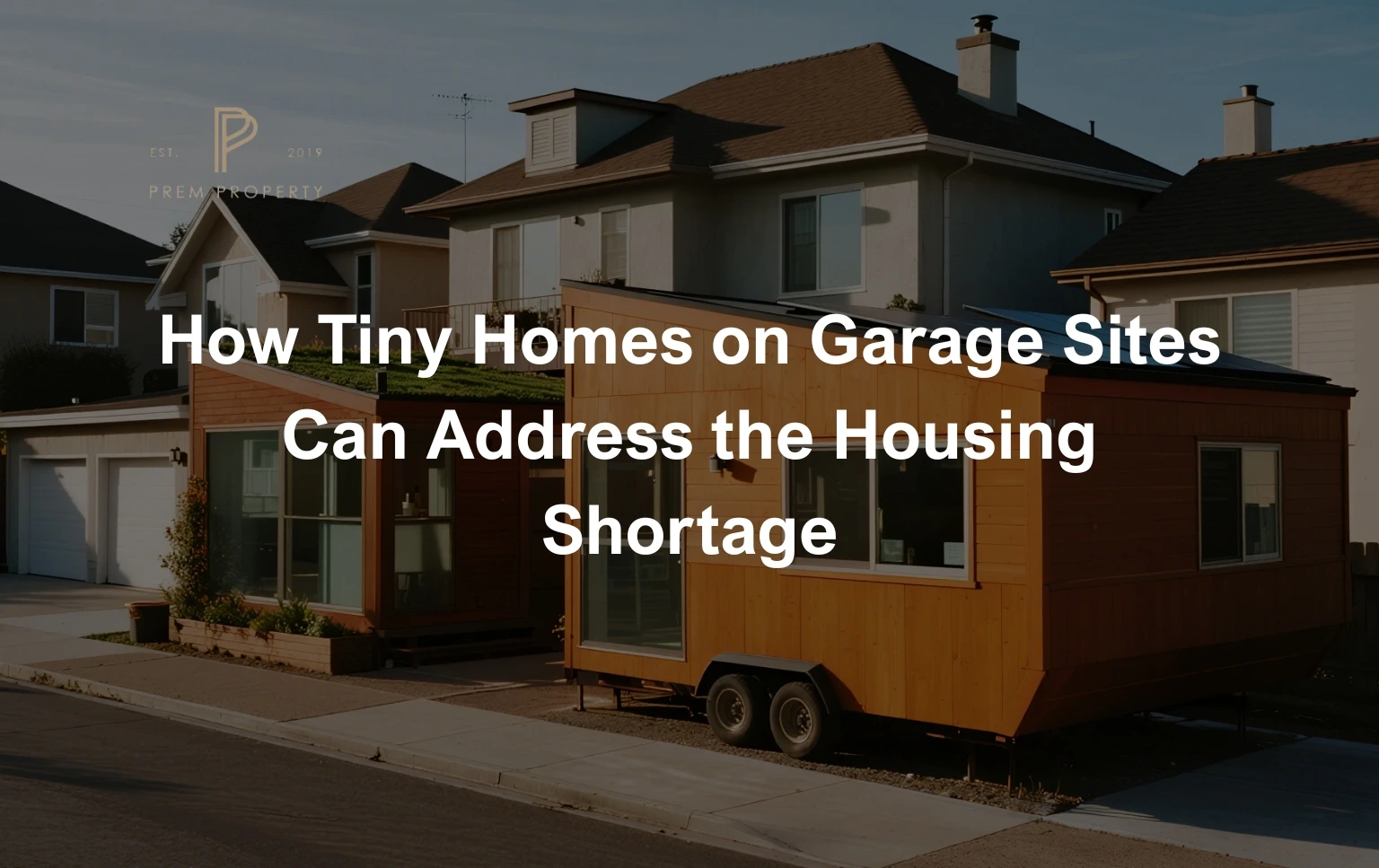Britain faces an unprecedented housing crisis, with the government struggling to deliver 1.5 million new homes by 2029. However, innovative solutions are emerging that could transform forgotten corners of our urban landscape into thriving communities. Tiny homes built on disused garage sites represent a game-changing approach to tackling the nation’s housing shortage, whilst new rental models like Guaranteed Rent Solutions are making property investment more attractive than ever.
The Hidden Potential of Garage Sites
Across Britain’s cities, thousands of abandoned garage plots lie dormant, representing untapped potential for housing development. Bristol alone identified 2,000 garages across 300 council estates that could be transformed into homes. Furthermore, these sites offer unique advantages over traditional greenfield developments.
Unlike large-scale housing projects that often face lengthy planning battles, garage site developments typically encounter fewer obstacles. Moreover, they integrate seamlessly into existing communities, providing residents with immediate access to established amenities and transport links. This proximity to existing infrastructure significantly reduces development costs whilst maximising rental potential for property investors.

Bristol’s Pioneering Gap House Project
Bristol City Council has demonstrated how this vision becomes reality through their groundbreaking Gap House initiative. Working alongside design practice BDP, they’ve created nine compact two-storey homes on a former garage yard in Horfield, near Southmead Hospital.
Each home measures just 40 square metres yet maximises every inch of space through clever design. The ground floor features an open-plan kitchen and living area alongside a bathroom, whilst the first floor houses a bedroom and storage space. Additionally, residents enjoy private balconies nestled between neighbouring properties, creating surprisingly spacious living environments despite the compact footprint.
Revolutionary Construction Methods
The project employs cutting-edge offsite manufacturing techniques, specifically structural insulated panels (SIPs). This approach offers several compelling benefits:
- Speed: Factory construction significantly reduces on-site build time
- Quality: Controlled manufacturing environments ensure consistent standards
- Sustainability: Precision cutting minimises waste and environmental impact
- Cost-effectiveness: Each home costs approximately £96,000 to construct
Consequently, these methods could revolutionise how Britain approaches small-scale housing development. The streamlined construction process also appeals to developers seeking quick returns on investment, particularly when combined with modern rental management solutions.
Environmental Excellence and Future-Proofing
These tiny homes aren’t just affordable—they’re also remarkably sustainable. Through advanced insulation, solar panels, and air-source heat pumps, each property consumes just 40.5kWh per square metre annually. This represents an 82% reduction compared to the average English home’s energy consumption of 231kWh per square metre.
Furthermore, the innovative construction approach achieves whole-life embodied carbon emissions of 515kgCO₂e per square metre, comfortably beating the RIBA 2030 Climate Challenge target of 625kgCO₂e per square metre. These environmental credentials make properties highly attractive to eco-conscious tenants, ensuring strong rental demand.
The solar panels generate approximately 950kWh annually, significantly reducing utility bills for residents. This energy efficiency translates into higher profit margins for landlords, as lower running costs allow for competitive rents whilst maintaining healthy yields.

The Investment Opportunity and Guaranteed Rent Solutions
For property investors, tiny homes on garage sites present exceptional opportunities. The low construction costs combined with strong rental demand create attractive yields, particularly in urban areas where housing shortages drive up rents. Moreover, the compact size makes these properties ideal for young professionals and key workers who struggle to find affordable accommodation near city centres.
Modern property management has evolved to support these investment opportunities through services like Guaranteed Rent Solutions. These innovative solutions remove the traditional headaches of property letting by guaranteeing rental income regardless of void periods or tenant issues. Landlords receive fixed monthly payments whilst professional management companies handle everything from tenant sourcing to maintenance and repairs.
This approach proves particularly valuable for garage site developments, where multiple small properties require efficient management systems. Guaranteed rent solutions ensure steady cash flow from day one, making it easier for investors to secure financing and plan long-term investment strategies.
Overcoming Development Challenges
Despite their promise, garage site developments face specific hurdles. Narrow access roads limit construction options, making flat-packed panel systems preferable to bulky modular alternatives. Additionally, unconventional orientations can reduce solar panel efficiency by up to 20%.
However, these challenges pale beside the benefits. Project director Matthew Mayes from BDP emphasises that garage plots offer “huge opportunities” for replication across multiple sites, creating economies of scale that improve financial viability. The standardised design approach also simplifies the planning process, reducing approval times and development risks.
Working with specialist MMC contractors like Etopia requires careful coordination from RIBA Stage 3 onwards. Early engagement ensures cost transparency whilst geometric design “freeze” at Stage 4 enables efficient manufacturing schedules. This predictability appeals to investors seeking reliable returns on capital.
The Scalability Factor and Market Potential
The true potential emerges when considering widespread implementation. If councils partnered with construction specialists for multi-year programmes, costs would decrease substantially whilst delivery speeds would increase. Already, councils in Cheltenham, Bath, and Taunton have expressed interest in similar schemes.
The YIMBY Alliance estimates that garage site developments could deliver 30,000 new homes annually across Britain. This represents a significant contribution towards addressing our housing shortage without consuming precious greenfield land. For the investment community, this scale creates substantial opportunities for portfolio growth.
Guaranteed Rent Solutions become even more attractive when applied across multiple properties. Investors can build diversified portfolios of tiny homes whilst maintaining predictable income streams, reducing risk whilst maximising returns.
Modern Methods of Construction: The Key to Success
Modern Methods of Construction (MMC) prove essential for making tiny homes viable. Ian Pritchett from Greencore Homes explains that MMC enables “greater precision and consistency, allowing us to push sustainability boundaries whilst ensuring buildability and performance.”
These methods accelerate delivery, reduce waste, and support fabric-first approaches that integrate design and environmental performance from project inception. Consequently, MMC represents a pathway to sustainable, affordable housing at scale whilst maintaining the build quality that attracts premium tenants.
The controlled manufacturing environment also ensures consistent standards across multiple developments, crucial for investors building portfolios of similar properties. This standardisation simplifies maintenance requirements and creates operational efficiencies that improve long-term profitability.
Community Integration and Social Benefits
Unlike isolated housing developments, garage site homes integrate directly into established neighbourhoods. Residents gain immediate access to local shops, schools and transport networks. Moreover, thoughtful design elements like street-facing green spaces encourage social interaction and community connection.
This approach addresses not just housing quantity but also quality of life, creating sustainable communities rather than mere accommodation. The strong community integration typically results in longer tenancies and lower void periods, benefiting both residents and landlords.
The Road Ahead: Policy and Market Trends
Bristol’s Gap House project demonstrates that innovative thinking can unlock significant housing potential in unexpected places. As planning reforms take effect and construction methods advance, garage site developments could become a cornerstone of Britain’s housing strategy.
Local authorities possess thousands of suitable sites, whilst modern construction techniques make development both financially viable and environmentally responsible. The combination creates unprecedented opportunities to address our housing crisis through creative use of existing urban space.
Government support for MMC and small-site development continues growing, with various funding schemes available for innovative housing projects. This policy backing, combined with services like Guaranteed Rent Solutions, creates an increasingly attractive investment landscape.
Final Thoughs: Small Sites, Big Impact
Tiny homes on garage sites offer more than just additional housing—they represent a fundamental shift towards sustainable, community-integrated development. By transforming forgotten urban corners into vibrant residential spaces, we can make meaningful progress towards solving Britain’s housing shortage whilst creating profitable investment opportunities.
The success of Bristol’s pioneering project proves that small-scale, innovative approaches can deliver big results. As more councils embrace this model and investors recognise the potential, garage sites across the nation could become catalysts for creating the affordable, sustainable homes our communities desperately need.
The future of housing may well lie not in grand developments on distant greenfield sites, but in the creative transformation of the overlooked spaces that already exist within our towns and cities. With guaranteed rental income schemes removing traditional letting risks, there’s never been a better time to invest in this revolutionary approach to addressing Britain’s housing crisis.

